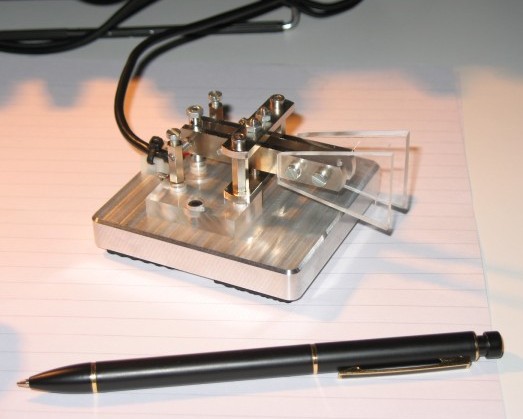
Morse telegraphy Home
What is ....
Here is a good definition that I found somewhere, I liked and I wanted to share with you:
CW is the mode that accomplishes the most with the least circuitry,
the least spectrum, and the least power.
My Morse teaching experience.
During nearly 9 years, I teached Morse telegraphy (and radioelectronics) to more than 2000 people (I stopped counting when I reached this number).
The youngest one had nearly 5 years and the oldest had 60 years. From all of them, only 3 (three!) were not able to learn the Morse code: one had mental disorders and others two had hearing problems. All others were able to learn, to send and to receive the entire Morse code (26 letters, 10 figures, 5 punctuation marks) without any problems.
The lowest speed was 12 words per minute (wpm) - PARIS etalon. Some of the students were able to easy receive and transmit at more than 40 wpm.
Also, some of them passed the ham radio examinations, got their own callsigns and they are active radioamateurs.

International Morse code signals
The administrative rules related to Morse code communications are established by the ITU (International Telecommunications Union) in Geneva. The last additions to Morse code were made in October 2010. After that, it seems that Morse code will be not any longer maintained. The International Morse code characters and the operational provisions applying to their use in radiocommunication services are contained in the Recommendation ITU-R M.1677-1.
1. Lettersa . - i . . r . - . b - . . . j . - - - s . . . c - . - . k - . - t - d - . . l . - . . u . . - e . m - - v . . . - [accented e] . . - . . n - . w . - - f . . - . o - - - x - . . - g - - . p . - - . y - . - - h . . . . q - - . - z - - . .2. Figures
1 . - - - - 6 - . . . . 2 . . - - - 7 - - . . . 3 . . . - - 8 - - - . . 4 . . . . - 9 - - - - . 5 . . . . . 0 - - - - -3. Punctuation marks and miscellaneous signs
Full stop (period) [ . ] . - . - . - Comma [ , ] - - . . - - Colon or division sign [ : ] - - - . . . Question mark [?] . . - - . . Apostrophe [ ’ ] . - - - - . Hyphen/dash/subtraction sign [ – ] - . . . . - Fraction bar or division sign [ / ] - . . - . Left-hand bracket (parenthesis) [ ( ] - . - - . Right-hand bracket (parenthesis)[ ) ] - . - - . - Quotation marks [“ ”] . - . . - . Double hyphen [=] - . . . - Understood . . . - . Error (eight dots) . . . . . . . . Cross or addition sign [+] . - . - . Invitation to transmit - . - Wait . - . . . End of work . . . - . - Starting signal - . - . - Multiplication sign [×] - . . - "at" sign [@] .- - . - .